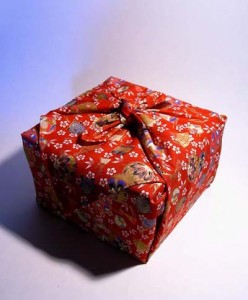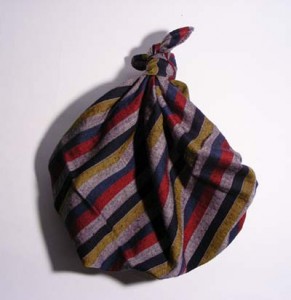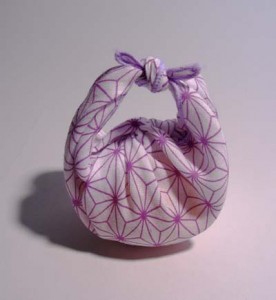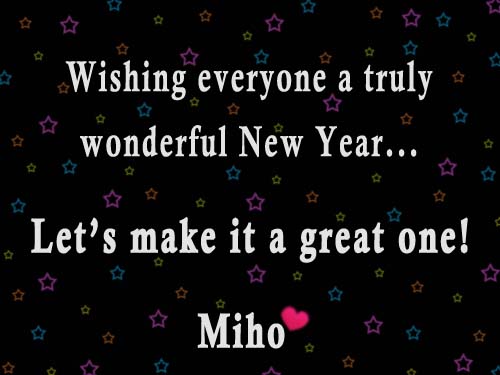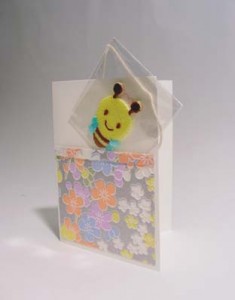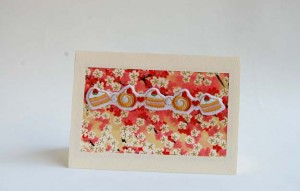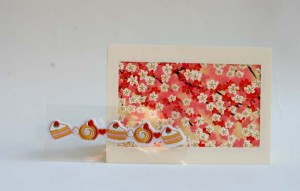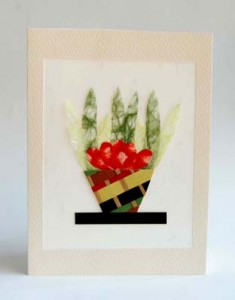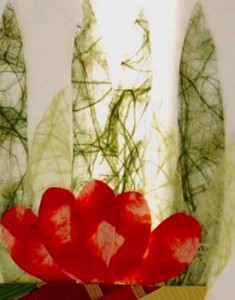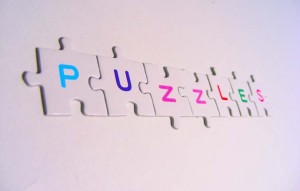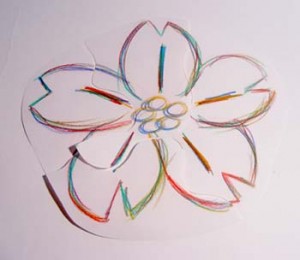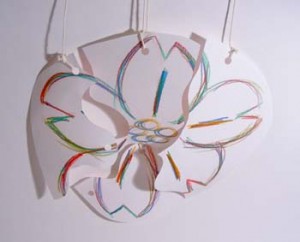Benefits of Furoshiki
Furoshiki are traditional Japanese cloths that are used for a variety of things. They are most well known to be wrapping cloths that are the eco alternative to paper and plastic gift wrapping.
They were used from ancient times as a way to easily carry and transport objects and shopping. Over time, furoshiki became more popular for merchants to transport goods and others used them to decorate and wrap gifts for special occasions.
In Japan, they are not as popular as they once were, but you can still see some people using them to wrap their bento (for daily lunches or especially during picnic seasons) and use them as a placemat.
Overseas, furoshiki are becoming more and more popular as an eco alternative to plastic bags and other wasteful packaging.
There are dozens of different ways to tie furoshiki cloths, from wrapping gifts (boxes, bottles…), making handbags from them, grocery shopping carrier, and even clothing items (little tops, sash, bolero…) or accessories (hair, outfit, handbag…).
A fantastic video showing different furoshiki folds:
More than just a card
For those of you who have trouble finding little gifts for that person who seems to have everything, or even someone who loves cutesy things, there’s a simple solution: cards that are more than just a card.
You can find many different types of cards these days with slots to fit giftcards, cds/dvds, or even pictures, but why not get a card with a cute little gift they can use or display?
There are cards that have decorative pouches or pockets out front, so instead of the usual, try to give something different like a cute patch -they can be used to decorate anything imaginable and just a fun surprise to receive with a card.
These cards can also be reused and passed on from one friend to the other, so everytime they receive it, something different will be placed inside.
Other ones can have the patch as part of the card’s decoration, but once removed, the card itself can be used as a display.
If you would like to send something a little more artistic, try a card that can be displayed in a variety of ways.
By using translucent paper, some cards can be placed in a window so that the sunlight will pass through the paper and allow different colours to shine or create an outline of any images. The same effect can happen with the card placed safely near a tealight, where the warm light can create a fine glow through the paper.
Origami and Kirigami Mobiles
***Quite busy these days, but the pictures will be posted at some point in the future!***
Origami is a great method to create interesting and intricate looking decorations, very fun mobiles for children, or even outdoor wind chimes.
Origami can use any paper, or even fabric, it all depends on the model and function.
My favorite paper is chiyogami or light washi, but I have used many others like tissue paper, old wrapping paper, cardboard paper, magazines, brochures and even parchment paper.
When using chiyogami and washi, they are lovely for special decorations or additions to gifts since they vary in colour, pattern and texture.
They are great for origami mobiles and if properly sealed, outdoor creations as well.
To begin, decide which origami shape, and how many of them you would like.
Then choose the paper you would like.
If it’s for a baby’s mobile, sharp, contrast works best, so black and white patterns are a good choice.
For outdoor wind chimes, a thicker waxy paper would work well, but chiyogami and washi are also great choices as long as you use a waterproof sealer.
The size of the paper is your choice, the average origami sheets come in 15cm x 15cm squares, but you can cut that into quarters and make mini origami pieces, or just buy small pre-cut packs of origami.
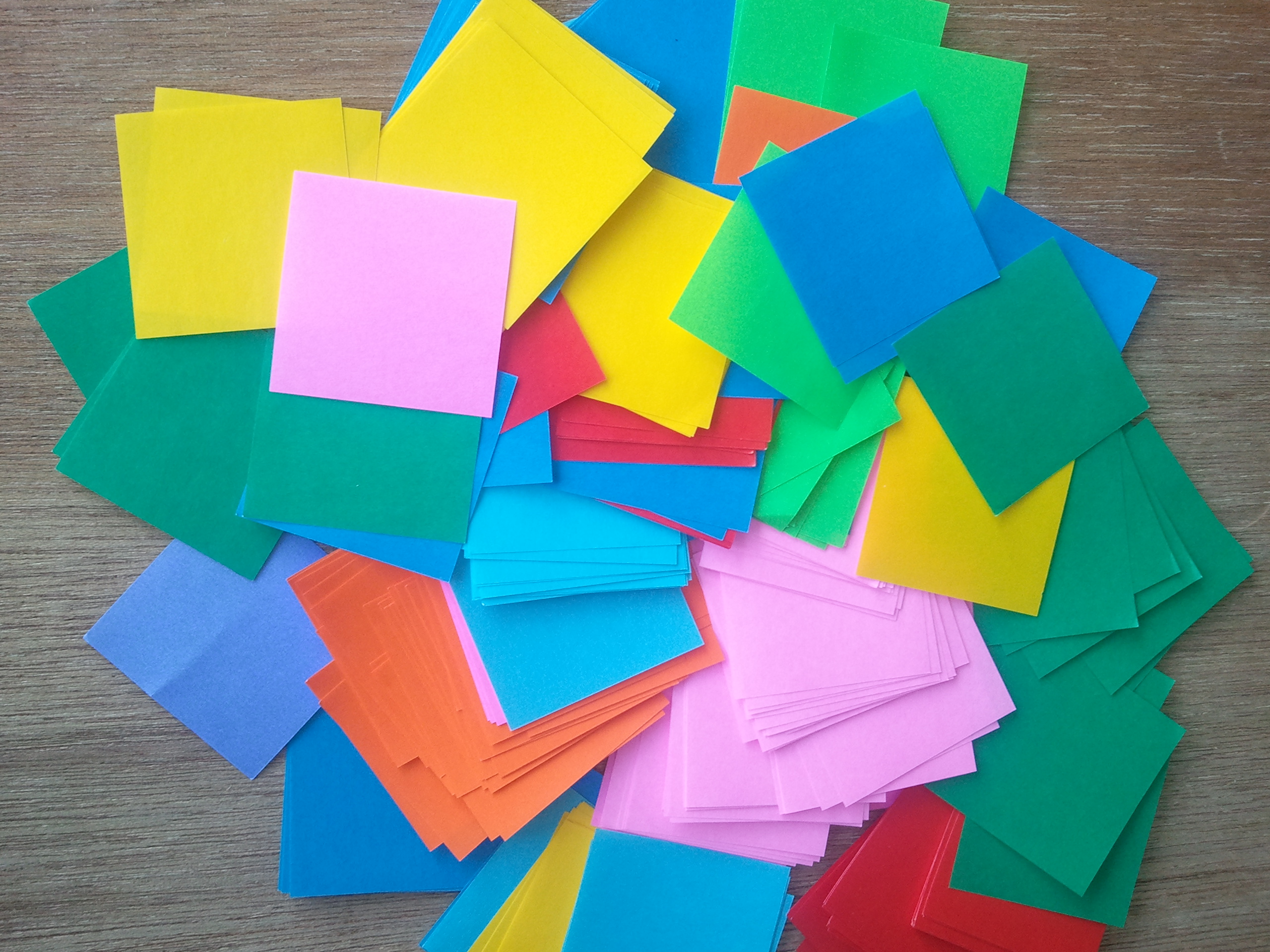
Personalized Puzzles
For many occasions and parties, it’s fun to give out little gifts or prizes to the guests (or just the children).
This is simply an other little extra detail to your party planning that shows you appreciate your guests or just want to give them a keepsake.
Gifts and keepsakes don’t have to be expensive, they can simply be fun. For example, a favorite of mine is puzzles.
There are places that sell blank puzzle sets, where you can use almost anything to create you own personal puzzle. If you don’t want to purchase a blank puzzle set, just make your own with cardboard. This allows you to choose the size and shape of your puzzle (ie. Cut out a heart shape…), and how many pieces to cut out.
When it comes to decorating them, I generally use marker because it has a bright and bold look, it’s waterproof, and also writes more precisely between the pieces.
I have used many puzzles for different occasions as special handcrafted addition to gifts.
For example:
Mother’s Day:
a puzzle with a large variety of flowers (her favorites) with a personalized written poem. I then broke up the pieces and attached them to her gift.
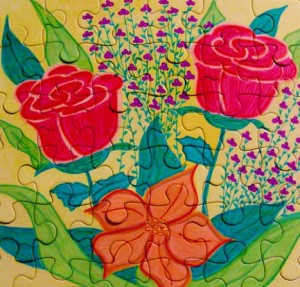
Birthday “guestbook” :
I drew in a big sign saying “Happy
Birthday!” along with stick figures in different poses or actions throughout the puzzle. I then had all the guests choose one stick figure representing them (or they could draw their own) and leave a little message.
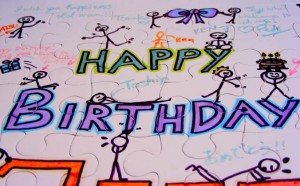
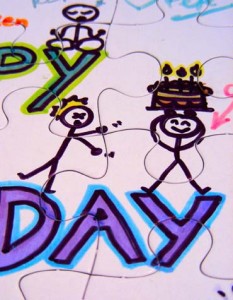
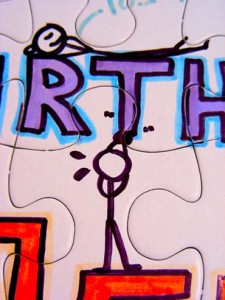
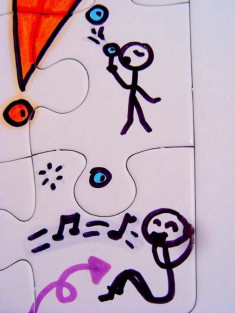
Card substitute:
I drew a representation of me and my best friend in a funny situation from when we were kids. I then broke up the pieces and mailed them in an envelope attached to her gift.
Games for children:
Many children love puzzles. Naturally, they shouldn’t be too complicated for the young ones, but challenging enough.
If you personalize the puzzles (draw the child or their favorite family member/friend/animal into the puzzle, or write their name) it will excite them about a game while they train their cognitive abilities and fine motor skills.
A set of letters for the older children will help them with their alphabet and spell out different words.
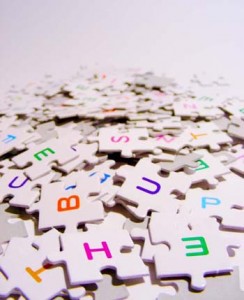
When I taught children (aged 3-5), I made large puzzles (60cm x 60cm or larger) and placed them in groups of four, or get bigger groups where everyone gets one puzzle piece.
They learn to work together where everyone pitches in for one complete puzzle.
If you would like to be even more creative, create a puzzle that has an image or words on both sides, then have the puzzle pieces hung in the appropriate order, but slightly spaced.





